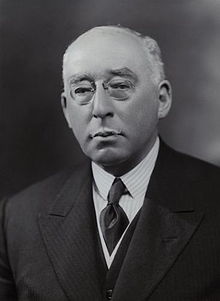Herbert Stanley
|
Sir Herbert Stanley GCMG |
|
|---|---|
 |
|
| 25th Governor of British Ceylon | |
|
In office 20 August 1928 – 11 February 1931 |
|
| Monarch | George V |
| Preceded by |
Arthur George Murchison Fletcher acting governor |
| Succeeded by |
Bernard Henry Bourdillon acting governor |
| Personal details | |
| Born | July 25, 1872 |
| Died | 5 June 1955 (aged 82) |
Sir Herbert James Stanley, GCMG (25 July 1872 – 5 June 1955) was a leading British administrator, who served at different times as Governor of Northern Rhodesia, Ceylon and Southern Rhodesia.
Born in England, Stanley was educated at Eton College and Balliol College, Oxford, and worked in the foreign service in Dresden and Coburg before serving as the Resident Commissioner for Southern and Northern Rhodesia from 1911 to 1914.
Stanley proved controversial in this role when he refused to allow settlers to take land from Africans, instead assigning 21,500,000 acres (87,000 km2) in perpetuity exclusively for the use of Africans.
Based in South Africa during World War I, Stanley married Reniera Cloete, from a leading Cape Town family, in Cape Town in 1918. She was described as "one of the most beautiful women of the century in any country of the world".
In 1918, Stanley was appointed Imperial Secretary in South Africa, a position he held until 1924, when he was appointed the inaugural Governor of Northern Rhodesia. As Governor, Stanley sought an amalgamation of the central African colonies and an extension of the Northern Rhodesian railway into Southern Rhodesia. He was also active in establishing and promoting Boy Scouts and Girl Guides.
In 1927, Stanley was transferred to Ceylon as its Governor, which drew criticism due to his lack of background knowledge of Asian affairs, although he is reported to have acquitted himself well. Whilst in Ceylon he served as President of the Ceylon Branch of the Royal Asiatic Society in 1929–30.
He returned to Africa in 1931 to serve as High Commissioner for the United Kingdom in South Africa before his appointment as Governor of Southern Rhodesia in 1935, initially for a two-year term, but he was persuaded to remain in Salisbury until 1942, when he retired from active service.
...
Wikipedia
